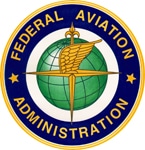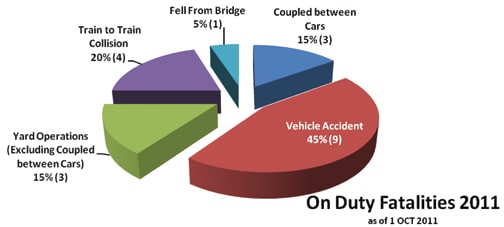In response to a petition of reconsideration filed by the American Short Line and Regional Railroad Association (ASLRRA) of the final rule that requires training, qualification and oversight for safety-related railroad employees, the Federal Railroad Administration (FRA) has issued a Notice of Proposed Rulemaking (NPRM) to delay the implementation of the rule for an additional year.
On Nov. 7, 2014, the FRA published a final rule that established minimum training standards for each category and subcategory of safety-related railroad employees and required railroad carriers to submit training programs to the FRA for approval. Railroads are required to submit their training programs to the FRA by May 1, 2018. Implementation of the programs is currently required by May 1, 2020. The NPRM proposes moving the May 1, 2018, date to May 1, 2019 and the May 1, 2020 implementation date to May 1, 2021. ASLRRA holds that they are still developing their training programs and won’t be ready for submission to the FRA before fall 2018.
The NPRM has been published in the Federal Register and is open for comments until Jan. 19.
Click here to read the NPRM.
Click here to submit comments to the FRA on the NPRM.
Tag: Federal Register

The agency, in a notice of proposed rulemaking, is responding to a mandate in the Airline Safety and Federal Aviation Administration Extension Act of 2010.
The FAA, subject to public comment and publication of a final rule, proposes that first officers – also known as copilots – hold an Airline Transport Pilot (ATP) certificate, requiring 1,500 hours of pilot flight time. Currently, first officers are required to have only a commercial pilot certificate, which requires 250 hours of flight time.
The proposed rule also would require first officers to have an aircraft-type rating, which involves additional training and testing specific to the airplanes they fly.
Other highlights of the proposed rule include:
* A requirement that pilots have a minimum of 1,000 flight hours as a pilot in air carrier operations that require an ATP prior to serving as a captain for a U.S. airline.
* Enhanced training requirements for an ATP certificate, including 50 hours of multi-engine flight experience and completion of a new FAA-approved training program.
* An allowance for pilots with fewer than 1,500 hours of flight time, but who have an aviation degree or military pilot experience, to obtain a “restricted privileges” ATP certificate. These pilots could serve only as a first officer, not as a captain. Former military pilots with 750 hours of flight time could apply for an ATP certificate with restricted privileges. Graduates of a four-year baccalaureate aviation degree could to obtain an ATP with 1,000 hours of flight time only if they also obtained a commercial pilot certificate and instrument rating from a pilot school affiliated with the university or college.
To read the notice of proposed rulemaking, click on the following link:
http://archives.gov/federal-register/public-inspection/
The public may comment on the proposal for 60 days after publication Feb. 29 in the Federal Register.
During the first six months of 2011, 37 serious injuries occurred during switching operations, resulting in three fatalities and eight amputations; while over the past two years, five rail workers have died in accidents involving rolling rail equipment.
The Switching Operations Fatality Analysis (SOFA) Working Group and the UTU Rail Safety Task Force have been consulting with the FRA to study the causes and prevention of such horrific accidents, leading the FRA Oct. 11 to issue new recommendations aimed at preventing such fatalities and injuries.
The recommendations, published in the Federal Register, are intended, says the FRA, to convey to carrier management and rail workers “the critical importance of following key operating procedures when going between rolling equipment.”
These recommendations include:
* Review current operating and safety rules that specifically address remote control locomotive and conventional switching operations that require employees to go between rolling equipment, and determine whether those rules provide adequate protection to employees, or need to be updated or revised;
* Develop, implement and monitor sound communication protocols that require employees on multi-person switch crews to notify their fellow crewmembers when the need arises to enter between two pieces of rolling equipment – regardless of whether the employee is the primary RCO or working on a conventional crews.
* Review SOFA Safety Recommendation No. 1 relating to adjusting knuckles, adjusting drawbars and installing end-of-train devices, and communicate procedures implementing that recommendation to employees working in yards or other locations where the possibility of entering between rolling equipment exists.
SOFA Safety Recommendation No. 1 provides: “Any crew member intending to foul track or equipment must notify the locomotive engineer before such action can take place. The locomotive engineer must then apply locomotive or train brakes, have the reverser centered, and then confirm this action with the individual on the ground.
“Additionally, any crew member that intends to adjust knuckles/drawbars, or apply or remove EOT device, must ensure that the cut of cars to be coupled into is separated by no fewer than 50 feet. Also, the person on the ground must physically inspect the cut of cars not attached to the locomotive to ensure they are completely stopped; and, if necessary, a sufficient number of hand brakes must be applied to ensure the cut of cars will not move.”
* Convey to employees that their own personal safety is their responsibility and that railroad management supports and encourages those employees that make safety their number one priority, regardless of their immediate assignment;
* Convey to employees that they should encourage fellow employees to perform their tasks safely and in compliance with established railroad rules and procedures.
To view the FRA’s Federal Register notice, click on the following link:
http://www.gpo.gov/fdsys/pkg/FR-2011-10-11/html/2011-26283.htm
To view more information on rail safety, click on the following link:
